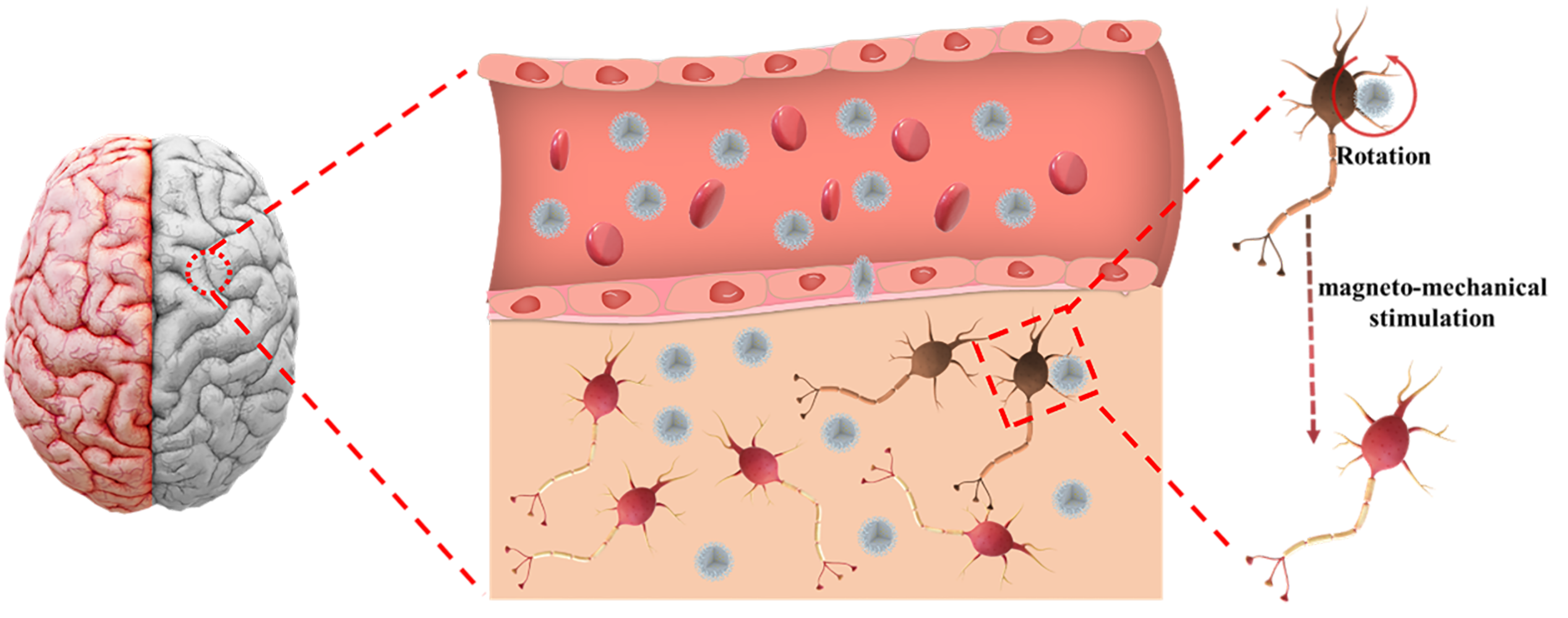博士生吴祥华、任龙教授等联合同济大学成昱教授课题组撰写的论文“Self-adaptive Magnetic Liquid Metal Microrobots Capable of Crossing Biological Barriers and Wireless Neuromodulation”被期刊ACS Nano(2023年IF:15.8,中科院一区TOP期刊)接收!
考虑到磁性液体微米机器人(MRs)具有几乎无限的形态适应性,但它们目前在微小的生物环境中进行变形时,面临着结构不稳定或易破损的风险。我们在本文中报道了一种磁性液态金属微米机器人(LMMRs),它具有高度的结构稳定性和强大的磁性操控能力。在该LMMRs中,我们通过建立界面化学势屏障,将铁纳米颗粒封装在小于10微米的液态金属微滴中。其强大的磁性操控能力来源于液态金属内部铁纳米颗粒的磁控组装以及独特的液固相互作用。LMMRs即使在50%变形后也能自适应恢复原状,使其能够攀爬高达自身长度400%的垂直墙面,并穿越宽度为自身三分之二的通道。体外和体内实验均验证了LMMRs在经过自适应变形后跨越血脑屏障,并在磁场驱动下对神经细胞进行有效的磁机械刺激。我们的研究为微米机器人实现安全有效跨越生物屏障的无线治疗提供了一个有前景的策略。
原文摘要如下:Magnetic liquid-bodied microrobots (MRs) possess nearly infinite shape adaptivity. However, they at present confront the risk of structure instability/crushes during shape-morphing in tiny biological environments. This paper reports that magnetic liquid metal (LM) MRs (LMMRs) show high structure stability and robust magnetic maneuverability. In this protocol, Fe nanoparticles are encapsulated inside less-than-10-μm LM microdroplets by establishing interfacial chemical potential barriers, yielding LMMRs. Their robust magnetic maneuverability originates from the magnetic-controlled assembling of Fe nanoparticles inside LM and distinct liquid-solid interaction. With the self-adaptive shape-recovering capabilities even after 50% deformation, LMMRs can implement vertical-climbing over walls up to 400% of its body length and traverse channels with the size of its two-thirds. The in vitro and in vivo experiments have both verified the effective magneto-mechanical stimulation of LMMRs upon neurons after their shape-adaptive crossing the blood-brain barrier under a driven magnetic field. Our work provides a promising strategy for wireless therapies with MRs by safely and effectively overcoming biological barriers.



